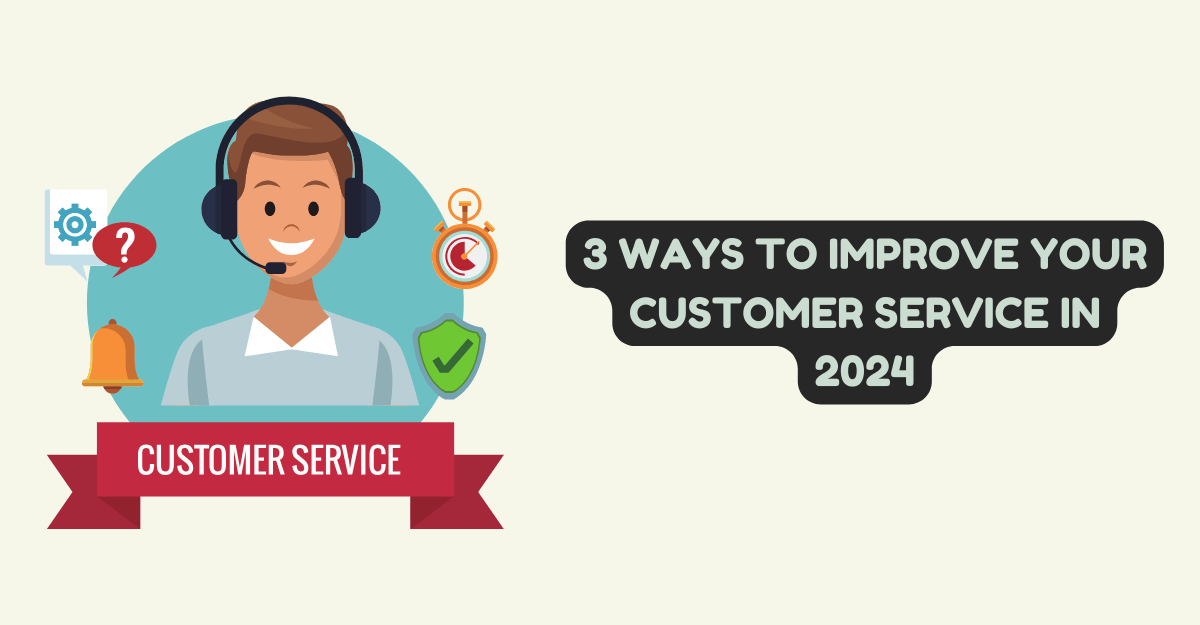
3 Ways to Improve Your Customer Service in 2024
There are fewer and fewer transactions today that leave you feeling taken care of and appreciated as a customer. While we’re decades removed from filling stations staffed by service attendants, customers now are expected to self-serve almost everywhere. Some of these shifts are welcome and can improve overall service delivery, but they can leave the customer experience lacking.
However, quality customer service and care are aligned with customer loyalty, and you guessed it, a healthy bottom line. So, it’s still extremely important. Learn how to improve your customer experience in 2024 and blend the best of technology and customer care.
1. Streamline Service Channels
We live in a multi-tab, multi-window society, where most people are tripling up their tasks just to stay afloat. While workloads, personal responsibilities, and the like may require this broad browsing experience, your offer shouldn’t require it. Streamline your service channels by implementing modern technology to improve your customer experience and your team’s capacity to serve. Do-it-all small business software allows you to centralize communication channels like email, chat, and phone. No matter what your customer’s channel of choice for service may be, your team can deliver a quality experience from one place.
Another benefit of streamlining your service channels is the ability to synchronize communications across platforms. Align marketing messages with customer interaction to personalize the experience and capitalize on your relationship. Bubble up a great sale via targeted social media advertising to a customer with an abandoned cart. Deliver product usage tips via email the same day their purchase is scheduled to arrive. When your system speaks with one another, you can customize customer interactions to improve engagement, increase relevance, and earn loyalty.
A streamlined service channel can also improve your capacity to respond to customers when they need you. Capture inquiries in one place no matter their arrival or source to capitalize on every opportunity. Automate responses during off-hours, even customizing responses based on common inquiries. Smart software can also transcribe voice messages, cutting down on note-taking, improving recordkeeping capabilities, and maximizing your ability to serve.
2. Invest in Your People
Your product might be incredible, but if your company’s ability to support your clients doesn’t match, that’s a problem. A confused customer isn’t a happy one, even if the product’s quality and functionality are perfect. Support your customers with a highly-trained, empowered, and cared-for customer service team. As the front line to your customers’ concerns, these team members need to be prioritized on your organizational chart.
Unfortunately, this philosophy isn’t always shared or backed up, but this lack of comprehensive customer support also leaves a gap. Invest in recruiting customer care representatives with a passion for service and interest in your industry. Provide full-scale training so they can become experts in your product line, which will boost their confidence and capabilities. Ensure your compensation plan attracts and retains the best talent and aligns with your service delivery expectations.
Similar to reducing touchpoints for your customer, you should aim to reduce them for your team, too. Place trust in your front-line representatives to solve problems and provide solutions during the first customer interaction. This approach will give team members greater autonomy to make things right and reduce the need to request higher approvals. While you might hesitate to remove layers of approval, consider the overall time saved to resolve issues. This improvement in efficiency plus the ability to address a customer concern gracefully can boost overall satisfaction and brand reputation.
3. Ask For, and Act Upon, Customer Feedback
Most companies have a standardized customer feedback loop that runs alongside transactional experiences. However, a web exit survey or satisfaction check-in doesn’t always tell the whole story. Assess your current customer feedback to keep your customers’ needs, not your own, at the forefront. Dig into your qualitative feedback, too, which can provide specific insight into experiences and where you can improve. If you have gaps in your data, launch an effort to get the feedback you’re missing.
Employ the use of focus groups to explore new concepts and strategies. Generally conducted over a few hours, focus groups can provide a safe space to stress test new technology or processes. If you’ve rebuilt your customer experience channel and streamlined software, do user testing to ensure it’s working as expected. Provide scripting to test every step and variant with novice users and familiar clientele to identify gaps before it’s launched.
Identify your industry reputation among peers and within affinity groups by reviewing message boards, forums, and online reviews. Take everything that you’ve learned back to your team as you plot your next steps. Conceptualize what your target customers need and want before you dive too deep into rethinking your processes. Test strategies with small sample groups, including variations of strategies for buyer personas or industries. After you’ve determined they’re effective, train your team, launch them across the enterprise, and monitor customer feedback for process adjustments.
Orchestrate the Perfect Customer Experience
A seamless customer experience doesn’t happen by accident; it’s a highly-strategized and tested art form. By streamlining the customer experience, you keep clients engaged and reduce potential friction while making a buying decision. Deliver a winning customer experience with well-trained and empowered service associates to match. When your clients are served by happy, engaged, and informed representatives, your brand value increases. Keep your customer service strategy at the forefront, and you’ll earn customer loyalty for years to come.





